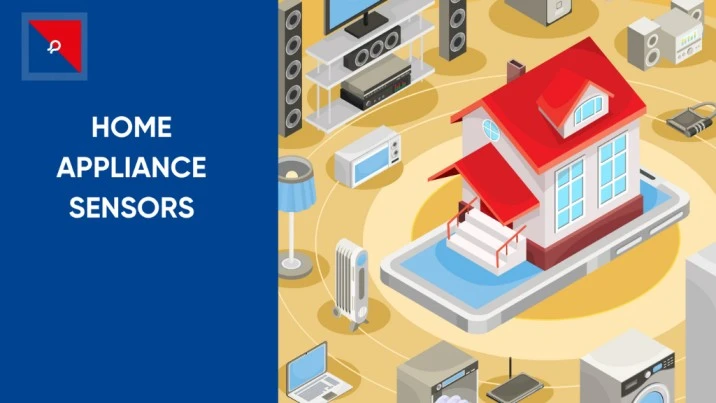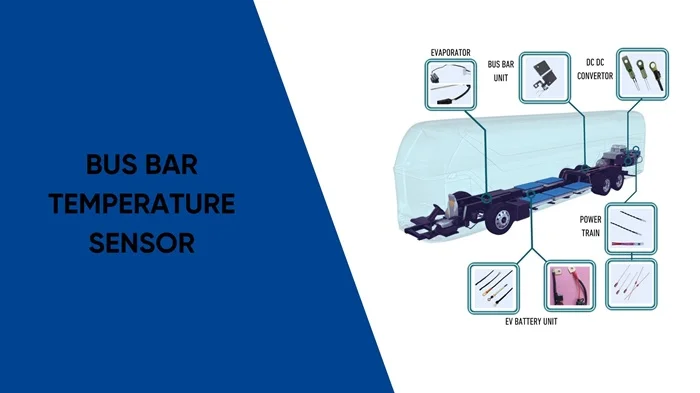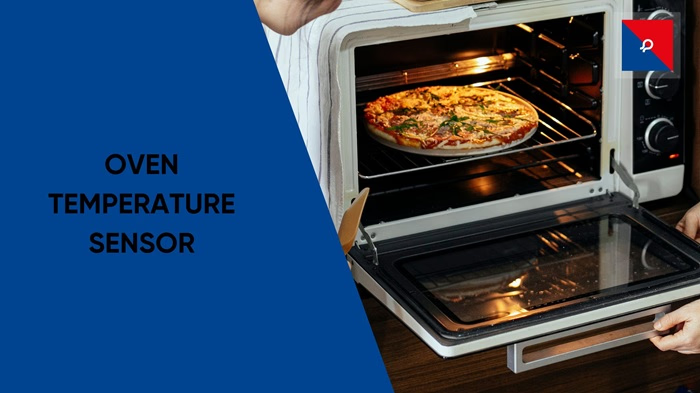
What are sensors in home appliances? Home appliance sensors are those tiny, often unnoticed components that basically do the thinking for your washing machine, air conditioner, or even your fridge. And honestly? Life without them would feel like going back to dial-up internet. Unthinkable.
We live in the era of smart everything—phones, TVs, watches, even kettles (yes, your humble tea-maker is in on the action). And if you’ve ever wondered how these devices "know" what to do and when to do it... Then our answer is- sensors.
These aren’t your average tech add-ons. They are sensing temperature, detecting motion, sniffing out toxic gases, and even alerting you when your milk’s about to go bad. Sounds futuristic? It’s already happening. From formaldehyde-sensing air purifiers to smart refrigerators that analyze food freshness, today’s appliances are practically intuitive.
And the best part? These high-tech features aren't reserved for the elite anymore. They’ve gone mainstream—and surprisingly, many of them are light on the pocket. The tech world has reached our living rooms, kitchens, and laundry spaces—and it's sensor-powered. So, if you’re still using appliances that just “do their job,” it might be time to fathom what you’re missing.
Let’s explore this entire gamut of smart sensors used in home appliances, understand how they make our lives easier.
Types of Sensors Used in Home Appliances (With Real-Life Use Cases)
You'd be amazed at the gamut of sensors used in home appliances today. They're not just about turning devices on or off anymore—they're all about personalization, safety, efficiency, and yes, even your convenience (because who has time for manual settings anymore?).
Let’s break down the kinds of sensors that are making our home appliances smarter than ever:
Gas Sensors
Think of them as the digital nose of your appliances. Gas sensors are used to detect harmful or flammable gases like CO, CH4, R32, and VOC gases like formaldehyde and benzene. You’ll find them working hard inside:
Air purifiers for detecting pollutants, Range hoods that activate when smoke or gas is present, Refrigerators sensing food spoilage gases to keep things fresh, and Water heaters for detecting gas leaks for safety.
Temperature & Humidity Sensors
Nobody enjoys stepping into a room that’s either too hot or too humid. That’s where temperature and humidity sensors come in.
These are found in:
- Air conditioners
- Dehumidifiers
- Washing machines
- Refrigerators
- Air boxes and purifiers
They help maintain optimum conditions, whether it’s making sure your laundry isn’t damp or ensuring your veggies stay crisp and fresh.
Motion Sensors
Sensors are used to detect human presence. These help systems like air conditioners or lighting panels, turn on only when someone is in the room. Smart, right?
You’ll often find them in:
- Smart lighting systems
- Air conditioning units
- Refrigerators with auto-light or alerts
- Cleaning robots that pause when you walk by (polite, isn’t it?)
These Sensors save energy. Adds comfort. Reduces wear and tear.
Dust & Particulate Sensors – Air Quality Gurus
When we say "smart air," we mean air that’s monitored. Where they’re found:
- Air purifiers
- Smart HVAC systems
- Cleaning appliances
Poor indoor air quality can be 2 to 5 times worse than outdoor air, according to the EPA. Yep. This emphasizes the growing need for reliable home appliance sensors that can protect your health.
VOC & Formaldehyde Sensors – Detecting the Invisible
Not all threats have a smell. Some of the most toxic indoor pollutants, like formaldehyde and benzene, are totally invisible and odorless. Thankfully, sensors have that covered.
Found in:
- Air purifiers
- Refrigerators
- Kitchen appliances
Got a new couch or kitchen cabinet, and suddenly the air feels off? That’s formaldehyde off-gassing. These sensors pick it up even if your nose can’t.
Water Quality Sensors
Especially useful in electric kettles, dishwashers, and water purifiers, these sensors monitor the quality of water by checking impurities and chemical composition.
Food Freshness Sensors
Say hello to smart refrigerators. These sensors sniff out gases released by decaying food, detect ethylene from ripening fruits, and signal alerts before your spinach goes sad and slimy.
Also features:
- Human detection sensors
- CO₂ monitoring for internal freshness control
Some fridges now combine these sensors with AI to tell you what needs to be used up.
The Rise of Intelligent Appliances: Powered by MEMS Sensors
Traditional sensors? Still around. Still helpful. But MEMS sensors? They’re basically the younger, cooler cousins that everyone’s talking about in the tech world.
What’s a MEMS Sensor?
MEMS stands for Micro-Electro-Mechanical Systems. Fancy, right? But all you need to know is this: they’re super tiny, super efficient, and super smart. They consume less power, are easier to fit into slim, stylish appliances, and offer precision like nobody's business.
And with the rise of IoT—aka the Internet of Everything—these MEMS sensors are showing up everywhere.
Why Home Appliance Sensors Integration is No Longer Optional (It’s a Must-Have!)
Can we really fathom using a basic toaster when smart toasters exist that know how brown you like your toast? Okay, maybe that’s a bit extra. But it proves a point: appliances that sense and adapt to our habits make life easier.
Here’s why you must consider appliances loaded with sensors:
- Energy Efficiency – Why waste power when a motion sensor can switch off your AC the moment you leave?
- Health & Safety – VOC sensors can literally sniff out threats you can't see or smell.
- Convenience – A temperature sensor in your washing machine ensures your clothes get washed just right.
- Smarter Living – Appliances that “learn” your habits and adjust accordingly? That’s living in the future—right now.
Plus, it happens to be a major bonus that many of these appliances are also light on the pocket compared to their first-gen predecessors.
Wrapping It Up
Whether it’s NTC thermistors, temperature probes, or any other temperature sensor for HVAC systems, one thing’s crystal clear—accuracy matters. And not just accuracy, but customization too.
That’s where JR Sensors steps in.
JRSensors is a leading Thermistor & Temperature Sensor Manufacturer in India, delivering sensor solutions with:
- 100% customized product design
- No minimum order quantity (MOQ) with accuracy at every measure.
From HVAC systems to home appliances sensors , from industrial-grade needs to delicate consumer electronics, JRSensors provides components that are not just functional but foundational to smart appliance tech.
So the next time you turn on your air purifier, fridge, or smart kettle, take a second to thank the little sensor used in home appliances inside. And remember, behind every great sensor is a brand that engineered it with purpose.
Frequently Asked Questions
1: What household appliances use sensors?
2: What sensors are used in home security?
3: What are examples of sensors in your house?
4: What are the 4 sensors in IoT?
5: What is an IR sensor used for?

Busbar Watchdogs: The Tiny Sensors Preventing Massive Power Failures
Think of them as your system’s early warning system. Busbar temperature sensors silently protect power grids, data centers, and switchboards from overheating, fire, and failure. Discover why this small sensor plays a big role in electrical safety and uptime.

Beyond Specs: 5 Must-Know Factors When Choosing a Thermistor Sensor Manufacturer
Not all thermistor manufacturers are created equal. Whether you're building a medical device or a smart appliance, this guide breaks down the 5 key factors that ensure you get precision, reliability, and peace of mind.

Burnt Biscuits? Blame the Sensor – The Hot Truth About Your Oven’s Temperature Troubles
If your oven’s cooking like it’s got a mind of its own, your temperature sensor might be the silent saboteur. From half-baked casseroles to scorched cookies, we break down how this little sensor works, why it matters, and how to fix it—without losing your cool (or your dinner). A fun, practical guide that’s just as useful as it is digestible.